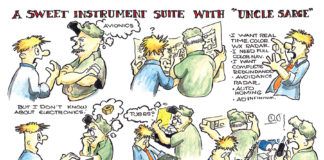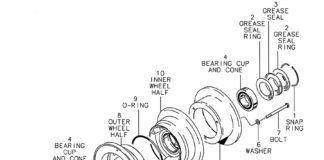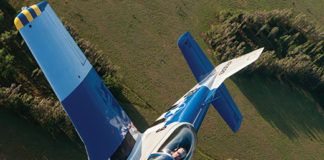Bivalve Solution?
Studying your article on fuel systems “Keep it simple. Keep it safe.” [December 2012], I agree simple is good. But is it possible that two simple things be simpler than one complex? A couple of examples before I present my suggestion:
When I was instructing in Musketeers, a student on a cross-country reached for the fuel selector, and noticed the handle gone. He landed in a Montana wheat field, recovered the missing components, reassembled, switched tanks and finished the task of the day.
My neighbor here in Wasilla (from where we cannot quite see Russia) took his rebuilt Super Cub out on the first flight, flew to a field where he could gas up. Switched tanks, but missed the detent. Flow was OK for taxi, but the engine failed at 300 feet. Nothing broke the chain of mistakes, and only good luck kept him alive when he stalled during an attempt to return to the field.
Thus, as I am working on rebuilding a couple of modified PA-22s, I have pondered whether using two separate fuel On/Off valves would not be simpler than one rotary selector. It has four detents: Up is right tank; Forward is left; Down is off; Back is also Off. The valve is operated via a small crank, and a red arrow points to the handle of the crank. When rebuilding/modifying, one has the opportunity to improve on old worn markings and fix other subtleties that may confuse and cause problems.
But what about one valve for each tank? Two separate valves, each with its own handle? Ideally placed side by side on the panel, right in front of me? This would also easily permit fuel balancing/management.
In the original, installation lines from front and rear of tanks are rejoined with a fitting in front of the doors. The single line from the right side snakes across the structure, behind the instrument panel and down to the selector. My idea is to eliminate the stock fuel selector, join the left front and rear fuel line (copy right side), and bring it up to a suitable point where it would meet the line from the right tank. Then install two valves: Left On/Off, and Right On/Off. Finally join the two lines, and route them through the firewall to the gascolator. Then run the fuel flow check as you described.
To my mind, the two-valve is simpler and more intuitive. I believe it would reduce the risk of mismanaging fuel and offer redundancy in the event of a malfunction. This is contrary to your rules, so I am open to your adjustment of my thinking.
Jon Svendsen
Dave Prizio responds: A simple solution such as yours has merit, but I hold to my one-valve rule, because it is not only simple, but familiar. In the case of an emergency, especially if the primary pilot is incapacitated, it is vital that all critical controls be configured in a familiar way so that anyone with general airplane knowledge can easily take control and do what needs to be done.
Your two valves are not complex by any means. With proper markings they most likely could be easily understood. However, they are not what a person unfamiliar with the plane would expect. This includes a potential rescuer, a right-seat passenger/pilot or a non-pilot who may need to be talked through a landing over the radio. That is the main argument against the two-valve solution.
Write to [email protected] or mail a piece of your mind to:
KITPLANES, P.O. Box 856, Friendswood, TX 77549, USA




